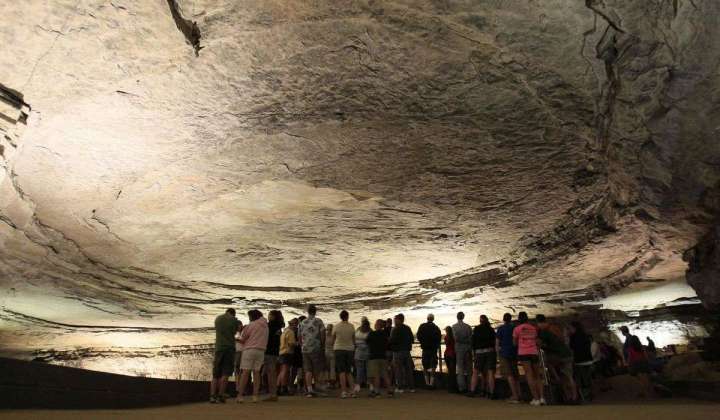Ancient shark species identified from fossil found in Mammoth Cave National Park

A new species of ancient shark that lived around 350 million years ago has been identified from fossilized remains found in Kentucky’s Mammoth Cave National Park.
Park officials announced the new species on Wednesday, which happened to be National Fossil Day.
Petal-shaped teeth were found jutting out of the ceiling and wall of one of the park’s caves as part of a paleontological inventory that has been ongoing since 2019, park officials said.
Its scientific name, Strigilodus tollesonae, references the creature’s scraping teeth and Kelli Tolleson, the park guide who helped paleontologists reach specimens in hard-to-reach areas of the park’s cave system.
Ms. Tolleson found multiple fossil sites during the inventory.
“The whole paleo team kept it a secret from me while the draft of this report was being written … I have to admit, I cried a little bit when they told me that, so it’s just such an honor and a great surprise,” Ms. Tolleson told WBKO-TV.
The discovery is the first new fossilized shark species found at Mammoth Cave.
“We are excited to finally announce the discovery of our first new shark species at Mammoth Cave on NFD. Teams of geologists, paleontologists, park staff, and volunteers have been hard at work deep inside the cave identifying and collecting fossils,” Mammoth Cave National Park Superintendent Barclay Trimble said.
Although park officials say Strigilodus tollesonae is a shark, they qualify it by noting that the species is more closely related to the modern ratfish than to today’s sharks.
Going by its teeth, park officials speculate it lived like a modern skate, feeding on smaller fish, snails, bivalves and worms.
The park is named after Ice Age fossils, including the wooly mammoth. The rocks and caves of the park, however, date much farther back to the Mississippian geological period, which spanned from roughly 359 million years ago to 323 million years ago, during the formation of the global supercontinent Pangaea.
At that time, Kentucky “was located south of the equator and much of the area at this time was submerged beneath a tropical sea that was connected with other bodies of water as far east as [present day] Scotland and Russia,” park officials said.






